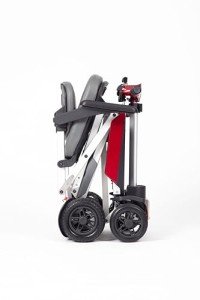Understanding Mobility Aids: Enhancing Independence and Quality of Life
As society continues to age and people increasingly look for methods to preserve self-reliance, the need for mobility aids has actually never been more relevant. Mobility aids, which incorporate a series of devices designed to help people with walking or moving, play a crucial role in promoting mobility, boosting security, and enhancing general lifestyle. This article will check out the numerous types of mobility aids, their benefits, factors to consider for choice, and address some regularly asked concerns.
Kinds Of Mobility Aids
Various mobility aids are readily available, each designed to attend to specific requirements. The following table summarizes some of the most typical types of mobility aids and their features.
| Type of Mobility Aid | Description | Best Suited For | Key Features |
|---|---|---|---|
| Walking canes | A handheld stick offering assistance and balance. | Individuals who need minimal help. | Light-weight, portable, adjustable height. |
| Walkers | Four-legged frames providing stability. | Those needing substantial support while strolling. | Foldable, some with wheels, added safety features. |
| Rollators | Wheeled walkers with a seat for resting. | Individuals needing mobility with the alternative to rest. | Brakes, baskets for individual items, adjustable height. |
| Wheelchairs | Chairs with wheels for individuals with restricted mobility. | Those unable to walk or needing extensive assistance. | Manual or powered choices, adjustable seating. |
| Scooters | Motorized devices for bigger ranges. | People with restricted endurance but needing self-reliance. | Various sizes and designs, often transportable. |
| Crutches | Assistance devices positioned under the arms or lower arms. | People recovering from lower limb injuries. | Adjustable, lightweight, needs upper body strength. |
| Stairlifts | Mechanical devices for moving in between floors. | Users facing challenges in multi-level homes. | Customizable for various staircases, automated. |
Benefits of Mobility Aids
Mobility aids provide a range of benefits that can considerably boost the lives of people facing mobility difficulties. Some significant benefits consist of:
- Increased Independence: Mobility aids empower people to move freely without relying on others for support, therefore improving their self-confidence and self-esteem.
- Boosted Safety: Using mobility aids can decrease the danger of falls and injuries, specifically for older adults or those with balance concerns.
- Improved Quality of Life: By helping with mobility, individuals can engage in social activities, attend events, and enjoy life more completely, contributing to much better emotional and psychological health.
- Rehabilitation Support: After surgical treatment or injury, mobility aids offer necessary assistance and stability, helping in recovery and rehabilitation procedures.
- Ease of access: Many mobility aids are developed to be utilized both indoors and outdoors, ensuring that individuals can navigate different environments with ease.
Factors to Consider When Choosing Mobility Aids
Selecting the appropriate mobility aid needs cautious consideration of numerous elements, consisting of:
| Factor | Considerations |
|---|---|
| User's Needs | Evaluate the level of mobility required; think about whether the user requires short-lived or long-lasting assistance. |
| Physical Limitations | Evaluate the user's strength, balance, and coordination to identify the best type of help. |
| Setting | Consider the primary environments where the aid will be used, such as home, outdoors, or particular surfaces. |
| Weight and Portability | Make sure that the picked device is workable relating to mobility and storage, especially for outdoor usage. |
| Spending plan | Mobility aids come in a variety of costs; think about insurance coverage and offered funding alternatives. |
| Adjustability | Pick aids that can be adjusted for height and convenience to accommodate development or altering requirements. |
Often Asked Questions About Mobility Aids
1. How do I know if I need a mobility aid?
Many factors can signify the need for a mobility help, such as trouble strolling or stabilizing, tiredness while standing, or a recent surgery impacting mobility. Consulting with a healthcare professional can supply assistance tailored to specific needs.
2. What kinds of mobility aids are covered by insurance coverage?
Protection differs between insurance providers, however most offer choices for resilient medical devices, which normally includes wheelchairs, walkers, and some types of walking canes. Talk to your insurance service provider for specific coverage information.
3. Can mobility aids be utilized outdoors?
Yes, numerous modern mobility aids are designed for outdoor use. Read A great deal more , scooters, and some walkers are geared up with functions for stability and ease of use on numerous terrain.
4. How do I maintain my mobility aid?
Routine upkeep involves examining for any wear and tear, guaranteeing that parts such as wheels, brakes, and frames are operating correctly, and cleaning up the equipment as required. Following the manufacturer's standards is crucial for safety.
5. Is there a threat of becoming based on mobility aids?
While some users might become reliant on mobility aids, they are developed to promote self-reliance and mobility. Slowly using a mobility aid can boost self-confidence and aid keep physical strength and coordination.
Mobility aids are invaluable tools that empower people to get rid of physical difficulties, promoting self-reliance and boosting lifestyle. By comprehending the various types of mobility aids offered, their benefits, and important elements for factor to consider, households and caretakers can make informed decisions that best meet the needs of their liked ones. With the right assistance, those with mobility difficulties can lead fulfilling and active lives, complimentary to check out the world around them.

